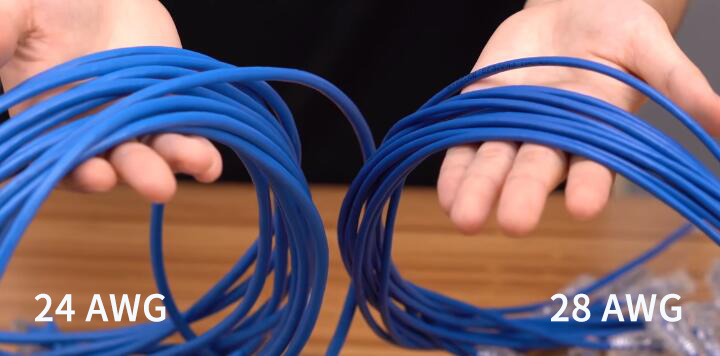Network Cable Standards for Generic Cabling: TIA 568 vs ISO 11801 vs EN 50173
Generally, there are three important standards mostly used in generic cabling system (GCS). They are TIA 568, ISO 11801 and EN 50173. Then, what are they? What are their differences? How can we choose the right standard to judge the quality of an Ethernet patch cable? What applications are they used respectively? Read through this post to find all the answers.
What Is TIA 568?
To begin with, you must know what the “TIA standards” is before starting with one of its branches TIA 568 directly. TIA, whose full name is Telecommunications Industry Association, is accredited by the American National Standards Institute (ANSI) to develop voluntary and consensus-based industry standards for a wide variety of Information and Communication Technologies (ICT) products. Thus, it is also mentioned as TIA ANSI, ANSI/TIA or TIA/ANSI. Sometimes, it is mentioned as TIA/EIA (Electronic Industries Association, which ceased operations on February 11, 2011) as well. It is the first and the most authoritative one among all the standards.
ANSI/TIA 568 is a set of telecommunications standards from the TIA. It defines structured cabling system standards between buildings in campus environments and for commercial buildings. And the current revision defines several link frequency and cabling categories of twisted-pair copper interconnects such as Category 5e (100 MHz), Category 6 (250 MHz), Category 6a (500 MHz) and Category 8 (2,000 MHz). Normally, the link impedance of this standard is 150 Ω.
As one of the main TIA 568 standards, ANSI/TIA-568-C.2 focuses on components of balanced twisted-pair cable systems. It specifically covers Category 3, Category 5e, Category 6 and Category 6a twisted pair cabling and components. The mechanical requirements of ANSI/TIA-568-C.2 define the physical characteristics and mechanical performance specifications the cable must meet. It also defines that the performance can only be achieved with the use of compliant components. Each category of cable must consist of four twisted pairs with solid or stranded conductors sized between 22AWG and 24AWG with thermoplastic insulation and an overall thermoplastic jacket with a diameter less than or equal to 9.0mm.
Another main standard ANSI/TIA-568.2-D (published in September, 2018), the newest standard for copper cables, specifies the mechanical and transmission requirements of category 3, Category 5e, Category 6, Category 6a, and Category 8 balanced twisted-pair copper cabling and components. It is also the standard for 28AWG patch cords.
What Is ISO 11801?
ISO 11801, or ISO/IEC 11801, is the international standard for Generic Cabling for Customer Premises. It specifies general-purpose telecommunication cabling systems (structured cabling) that are suitable for applications such as analog and ISDN telephony, various data communication standards, building control systems, etc. It covers both balanced copper cabling and optical fiber cabling.
ISO 11801 was designed for use within commercial premises such as a single building or multiple buildings on a campus, which is the same as ANSI/TIA 568. And the cable jacket normally uses PVC material.
The ISO 11801 standard defines several link/channel classes and cabling categories of twisted-pair copper interconnects as follows:
In addition, the link impedance of this standard is 100 Ω. What’s more, there is no equipment that has connectors supporting the Class F (Category 7) channel and Class FA (Category 7a) channel. Category 7 and Category 7a are not recognized by the TIA/EIA.
What Is EN 50173?
EN 50173, or CELENECEN 50173, is a European standard for generic cabling system. Based on TIA and ISO 11801, EN 50173 has other additional requirements for network cables. In general, this standard is consistent with the ISO/IEC 11801 standard, while it normally uses LSZH cables.
The standard series of EN 50173 is divided into five areas (from EN 50173-1 to EN 50173-5) for various applications. These applications embody in general requirements, office buildings, industrially used buildings, private residential units and computing centers respectively.
There is also a difference in the individual components such as cable and connection technologies (link frequency, for example) and also in the installation class of these components, the same as ISO 11801.
Comparison of TIA 568, ISO 11801 and EN 50173
From all the above, TIA 568 is the standard used first and is the most authoritative for GCS; EN 50173 is the strictest one of the three since it adds additional requirements based on TIA 568 and ISO 11801; as the international one, ISO 11801 is also widely used. The three standards nearly feature the same using environments such as in campus environments and commercial buildings, whereas they differ in several small aspects as follows:
You can follow different standards according to various situations. For example, if you want to test the quality of a Cat7 cable or Cat7a cable, you can follow the standard of ISO 11801 or EN 50173. And if you are in UK, you’d better choose the EN 50173 standard. To tell whether the cable you want has followed the right standard and passed the quality test, you can buy Ethernet cable from vendors who can present you the quality test report (Fluke test report, for example).
Related Articles: How to Choose and Buy the Best Ethernet Cable Network & Communication Cables That Power Your Internet Quick View of Ethernet Cables Cat5, Cat5e And Cat6
You might be interested in
Email Address

-
PoE vs PoE+ vs PoE++ Switch: How to Choose?
May 30, 2024

















